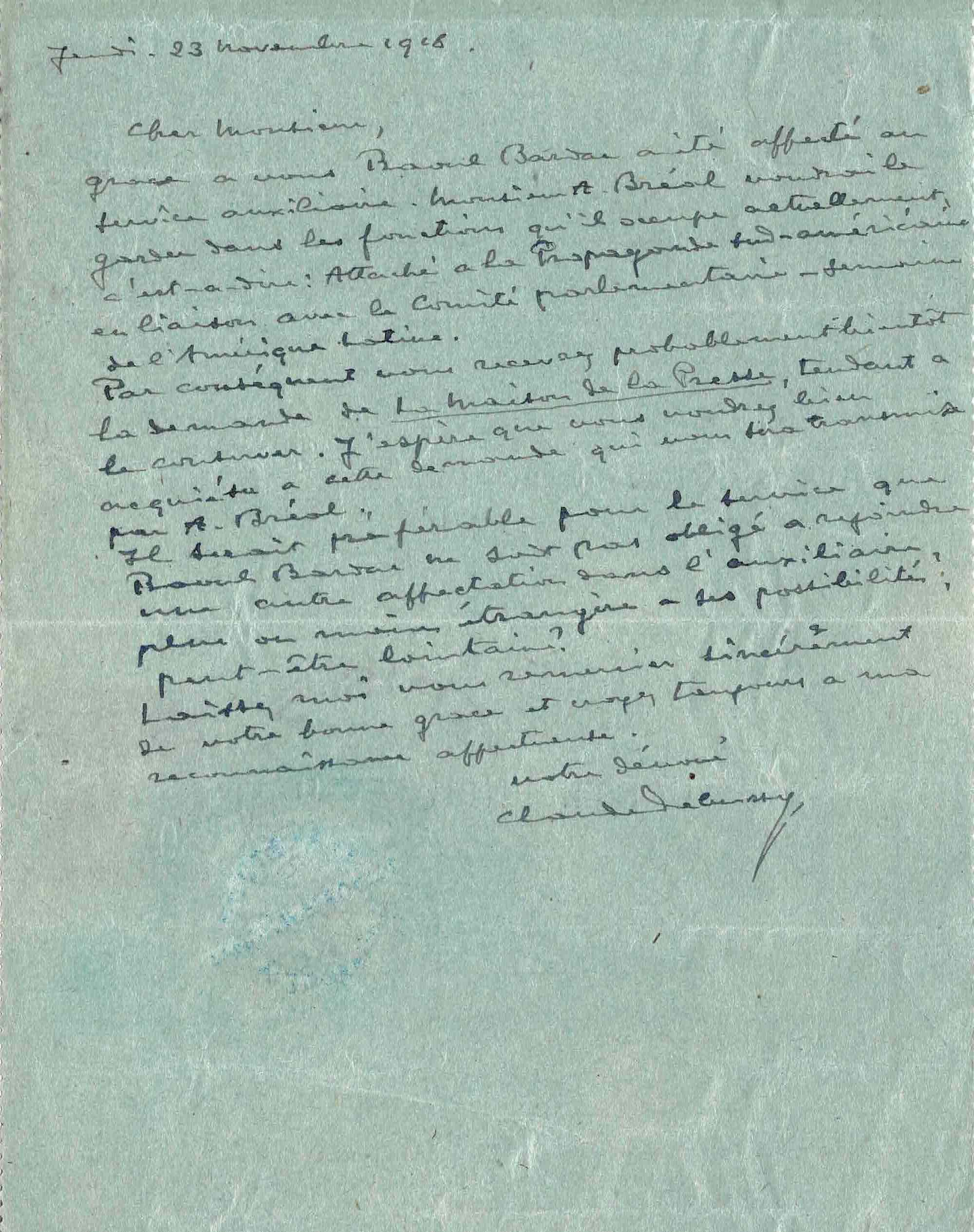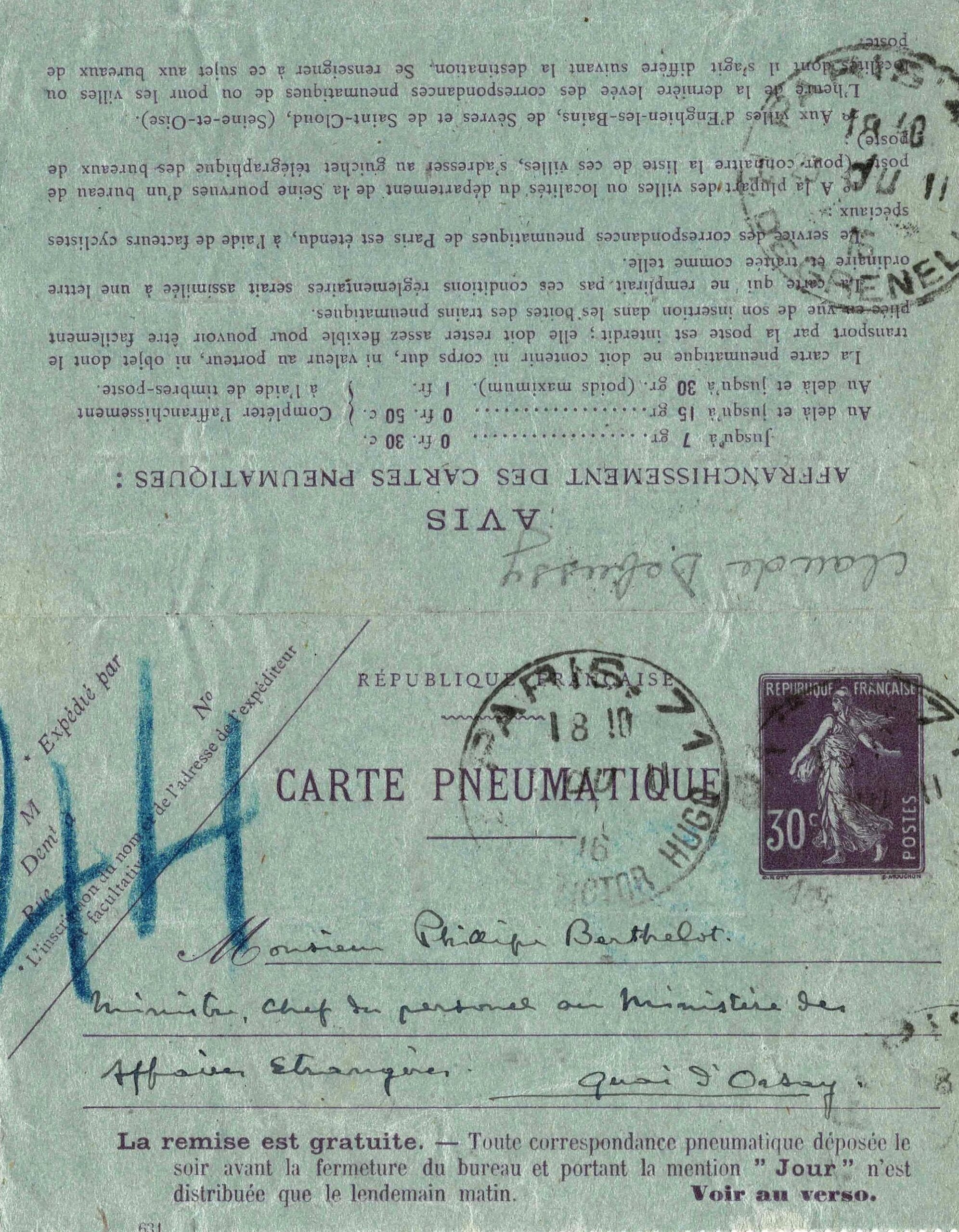Claude Debussy (1862.1918)
Autograph pneumatic letter signed to Philippe Berthelot.
One page in-12° on green paper with serrated edges.
Residual trace of collection stamp.
[Paris] November 23, 1916.
_________________________________________
“Dear Sir, Thanks to you Raoul Bardac has been assigned to auxiliary service. Mr. A [uguste] Bréal would like to keep him in the functions he currently occupies, that is to say attached to South American propaganda in liaison with the parliamentary senatorial committee for Latin America.
Therefore, you will probably soon receive the request from the Maison de la Presse , tending to keep it. I hope that you will agree to this request which will be transmitted to you by A. Bréal. It would be better for the service if Raoul Bardac was not obliged to join another assignment in the auxiliary, more or less foreign to his possibilities, perhaps distant? Let me sincerely thank you for your good grace and always believe in my affectionate gratitude. Your devoted Claude Debussy. »
_________________________________________
The Maison de la Presse was created in January 1916 by Philippe Berthelot, then in the office of Aristide Briand, President of the Council: it was an interministerial service for collecting and disseminating information through leaflets, free and newspapers. This propaganda organization's mission was to place responsibility for the war on the adversary as well as to support the Allies. The composer and musician Raoul Bardac (1881-1950), stepson of Claude Debussy, was mobilized there.
The same day, Claude Debussy sent a letter to Auguste Bréal on the same subject, mentioning Philippe Berthelot and recommending that his son-in-law be kept in the service of South American Propaganda (letter kept at the Pierpont Morgan Library, MLT D289.B828 ).
Brother-in-law of Alfred Cortot and one of the directors of the Maison de la Presse (he was in charge of the Propaganda Section), Auguste Bréal was close to Philippe Berthelot: he composed his biography, published by Gallimard in 1937.


